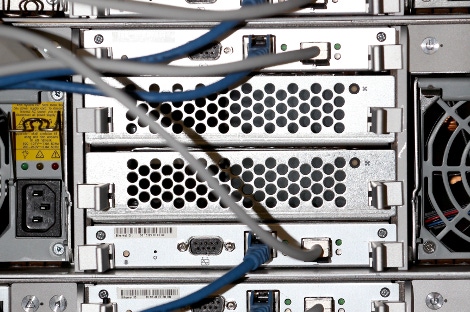Sponsored: Designing PDU Density for Next-Gen Digital Data Centers
What can data centers do today to support power and PDU density requirements of a demanding market?
January 4, 2017

There is a digital revolution happening within the modern data center. New types of workloads – IoT, Big Data, cloud – are all changing the way we deploy and control our data center infrastructures. Through it all, demand around resources continues to increase as well. In fact, data centers have grown from virtually nothing 20 years ago to consuming about 3% of the global electricity supply.
Because of these demands, we’re also seeing greater utilization around data center resources. With that in mind, power consumption in the data center continues to be a rising trend. Consider this, a recent Data Center Knowledge article pointed out that the demand for data center capacity in the US grew tremendously over the last five years:
US data centers consumed about 70 billion kilowatt-hours of electricity in 2014, the most recent year examined, representing 2 percent of the country’s total energy consumption, according to the study. That’s equivalent to the amount consumed by about 6.4 million average American homes that year. This is a 4 percent increase in total data center energy consumption from 2010 to 2014, and a huge change from the preceding five years, during which total US data center energy consumption grew by 24 percent, and an even bigger change from the first half of last decade, when their energy consumption grew nearly 90 percent.
Efficiency improvements have played an enormous role in taming the growth rate of the data center industry’s energy consumption. Without these improvements, staying at the efficiency levels of 2010, data centers would have consumed close to 40 billion kWh more than they did in 2014 to do the same amount of work, according to the study referenced in the DCK article, which was conducted by the US Department of Energy in collaboration with researchers from Stanford University, Northwestern University, and Carnegie Mellon University.
The latest AFCOM State of the Data Center report showed that 70% of respondents indicated that power density (per rack) has increased over the past three years. And 26% indicated that this increase was significant.
With that in mind, it’s important to ask: What can data centers do today to support power and PDU density requirements of a demanding market?
Well – there’s good news. The future of rack PDUs is here.
Leveraging High Density Outlet Technology (HDOT). High power densities and reduced cabinet space require new and innovative PDU systems. Now, there’s a new outlet technology that provides industry standard C13 and C19 outlets in a drastically reduced footprint. In planning for future designs, HDOT helps combat the limited physical space that PDUs compete for in the data center rack. Solutions like those from Server Technology now leverage High Density Outlet Technology (HDOT).
Utilize “super” small form factor PDUs. The HDOT PDU technology leverages the smallest form factor outlet. This design significantly increases real estate in the back of the rack by fitting as many as 42 C13’s in a 42U high network managed PDU device—that’s over 20 percent smaller than a comparable PDU using standard outlets
Incorporating smart cabling designs. The HDOT design also provides high native cord retention of over 12 pounds pull strength, reducing or eliminating the need for custom and costly ancillary locking cord devices.
Working with PDU systems that can scale with power, density, and heat demands. With increasing outlet density comes increased power, and potentially increased heat. HDOT is manufactured with robust high-temperature materials carrying a UL94 V-0 flame rating, making these outlets ideally suited for the harshest data center environments.
Remember, with growth in cloud come new requirements around rack, server, and power density; placing even more requirements around advanced PDU systems. A 2015 NRDC report indicates that data center electricity consumption is projected to increase to roughly 140 billion kilowatt-hours annually by 2020. This is the equivalent annual output of 50 power plants, costing U.S. businesses $13 billion annually in electricity bills.
Organizations must design their data center power systems around new digital requirements. A major part of that is creating density without giving up performance or capabilities around scale. With increasing outlet density comes increased power, and potentially increased heat. Server Technology’s HDOT is manufactured to meet all the modern data center challenges. Keep in mind - small form factor PDUs and HDOT solutions aim to specifically ease density challenges while still allowing both the business and the data center to remain very agile.
This article was sponsored by Server Technology. Please visit their solutions page for more information.
About the Author(s)
You May Also Like



.jpg?width=700&auto=webp&quality=80&disable=upscale)



